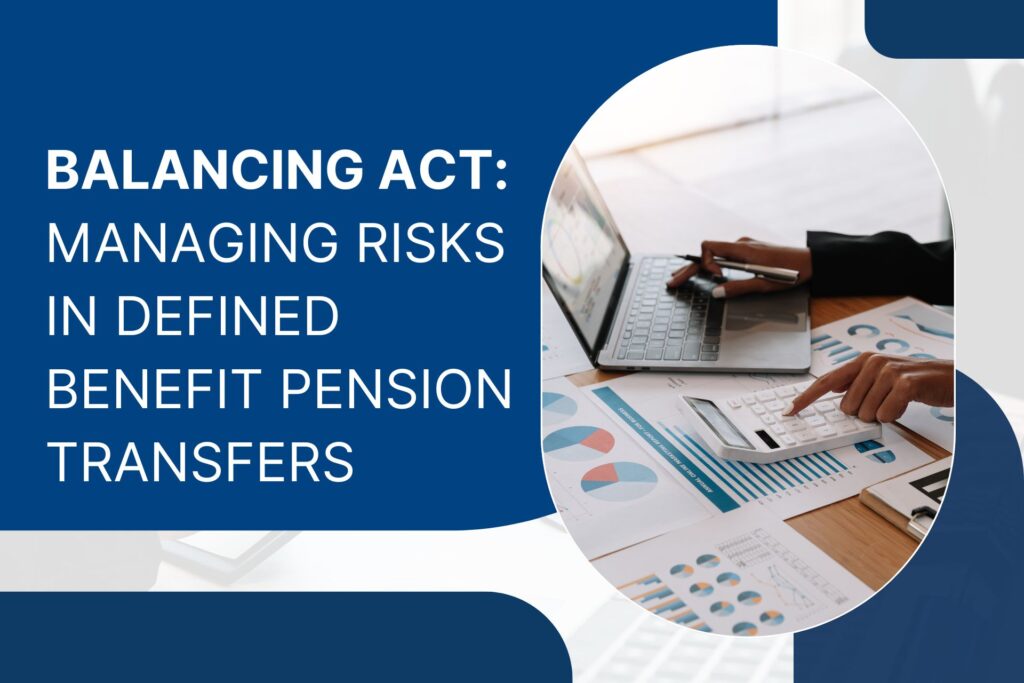In the intricate landscape of financial planning, the defined benefit pension transfer emerges as a crucial element requiring a delicate balance. Defined benefit pension plans offer a stable income stream during retirement, but individuals often contemplate the option of transferring these benefits. This decision, laden with potential advantages and risks, demands careful consideration. In this article, we delve into the intricacies of managing risks associated with defined benefit pension transfers, providing you with a comprehensive guide to navigate this complex terrain.
Understanding Defined Benefit Pension Transfers
Unveiling the Basics
Before delving into risk management, let’s establish a foundational understanding of defined benefit pension transfers. A defined benefit plan guarantees a specified pension amount upon retirement, often based on factors like salary and years of service. However, individuals may opt for a transfer, converting this promised income into a lump sum or an alternative form, typically a defined contribution plan.
The Temptation of Transfer
The allure of a lump sum or greater control over investments often prompts individuals to consider defined benefit pension transfers. The prospect of flexibility in managing retirement funds can be enticing, but it comes hand-in-hand with a multitude of risks that demand meticulous attention.
Assessing the Risks
Market Volatility
One of the primary risks associated with defined benefit pension transfers is exposure to market volatility. Unlike the stable income provided by traditional pension plans, a transferred lump sum is subject to the whims of the financial markets. Navigating this volatility necessitates strategic investment planning to mitigate potential losses and optimize returns.
Longevity Risk
The blessing of a longer life brings forth the challenge of longevity risk. Individuals opting for a pension transfer must carefully calculate and plan for a retirement that may extend beyond expectations. This calls for meticulous financial forecasting and contingency measures to ensure sustainable income throughout an extended retirement period.
Inflation Concerns
The silent eroder of purchasing power, inflation poses a substantial threat to the longevity of retirement funds. While a defined benefit pension may provide a hedge against inflation, a transferred lump sum requires prudent investment strategies to counteract the corrosive effects of rising prices over time.
Strategies for Effective Risk Management
Diversification
Mitigating market volatility requires a well-thought-out investment strategy. Diversification, a cornerstone of risk management, involves spreading investments across a variety of assets. This strategy helps buffer against the impact of poor-performing sectors, fostering a more resilient retirement portfolio.
Long-Term Planning
Addressing longevity risk demands a proactive approach to long-term financial planning. Individuals contemplating a pension transfer should engage in meticulous forecasting, considering factors such as healthcare costs, lifestyle choices, and potential unforeseen expenses. Long-term planning is the key to ensuring financial security throughout the entirety of retirement.
Inflation-Adjusted Investments
To combat the erosive effects of inflation, adopting an investment approach that accounts for rising costs is imperative. Allocating a portion of the transferred pension funds to inflation-adjusted investments, such as Treasury Inflation-Protected Securities (TIPS) or diversified real estate, can act as a safeguard against the depleting impact of inflation on purchasing power.
Conclusion
In the delicate balancing act of managing risks in defined benefit pension transfers, informed decision-making is paramount. Understanding the nuances of market volatility, longevity risk, and inflation concerns empowers individuals to navigate the complexities of pension transfers with confidence. As you weigh the pros and cons, remember that risk management is not a one-size-fits-all endeavor; it requires tailored strategies aligned with your unique financial goals and circumstances.


